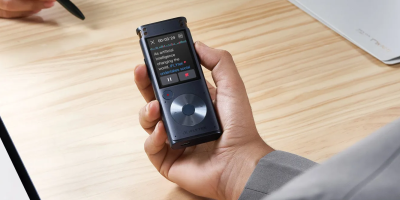As of 2023, approximately 70% of American adults require a vision correction tool. Unsurprisingly, this has resulted in the continued growth of the industry. Case in point is the international spectacle lens market, which was valued at around $55 million recently but is set to reach $88 million in the next few years. This demand has also led to the continuous creation of various lens innovations that assist and protect the eyesight of wearers.
One of those innovations is a blue light screen for your Android device. This function is available on most Android smartphones and is perhaps better known as ‘night mode’. It applies a blue light filter to the screen, reducing the blue light emitted by your screen. Additionally, it can reduce eye strain while using your device. However, not all Android phones have it on; night mode has only been optional since Android Oreo.
That means you might need to take other precautions to minimize your exposure to blue light. One of the eyewear developments making big waves today are blue-violet lenses. Though relatively new in the market, more and more brands are beginning to offer these lenses due to their functionality.
What are blue-violet lenses?
A closer look at the electromagnetic spectrum is needed to understand these lenses fully. The spectrum’s most damaging color is ultraviolet (UV). These UV rays release radiation that causes health risks after long-term exposure. The general public is familiar with these rays as emissions by the sun, as health experts often urge many to wear sunscreen for this reason. However, many are unaware that these rays can also damage the eyes with regular exposure. Without protection, the eyes can experience different conditions, like photo conjunctivitis.
Aside from this, while not the case for most modern gadgets, some believe that certain screens emit eye-damaging rays, too. With a lot of people relying on their devices for work, school, and socialization, frequent gadget use is unavoidable in many cases. With both factors in mind, blue-violet glasses were made to reduce the wearer’s exposure to these damaging rays. They are recommended for everyday use, as most people encounter harmful light rays through natural and artificial sources wherever they go. Furthermore, they come with the added benefit of enhancing color vibrancy and contrast. Some manufacturers, like Johnson & Johnson, even state that blue-violet eyewear can increase eye comfort and healing thanks to its light-filtering capabilities.
Due to their usefulness, many retailers have begun offering blue-violet lenses as an option for their frames. You will find blue light glasses are readily available online for regular and prescription eyewear. Consumers are also spoiled for choice as famous brands like Oakley, Burberry, and Ray-Ban have also begun to offer this coating for their eyewear. For those who prefer to purchase their blue-violet lenses in person, many retailers have store locators on their websites that can determine the nearest shops that sell these lenses in anticipation of the interest they garner.
What are the differences between blue-violet lenses and blue light lenses?
Due to their name, blue-violet lenses can easily be compared to the more known blue light glasses, which permeated the market earlier. In many cases, retailers even interchangeably use the terms for their lenses. However, multiple differences set them apart.
Usage
Blue light lenses are primarily used indoors when staring at digital screens. Increased screen time over the years compelled health experts to create eyewear specifically for when using technology. In recent years, the integration of technology with the public’s everyday lives has removed set schedules for device usage. Thus, blue-violet lenses were designed for the protection of both digital and outdoor lifestyles.
Tint color
The lenses of blue light eyewear are tinted yellow to negate the blue hues that gadgets typically come with. This uses color theory, as yellow is the opposite color of blue. Similarly, blue-violet lenses are tinted with their contrasting color: green. Though this may be noticeable initially, most experts and consumers agree that it just takes some getting used to, especially since the subtle tints.
Damage prevention
Though blue light lenses can block out harmful rays to a certain degree, their main uses are to decrease eye strain, assist with sleep quality, and prevent the likelihood of dry eyes. On the other hand, blue-violet lenses were devised to be more hardworking. As mentioned above, ultraviolet rays are the strongest in the spectrum and the most damaging. Therefore, using these glasses can reduce several health risks associated with long-term UV exposure, such as cataracts, blurred vision, and photokeratitis. This painful condition stems from sunburn on the eyes.
As detailed, blue-violet lenses are designed to protect consumers from UV-induced sight damage. Though still new, their benefits make them significantly useful for those who want to correct their vision from external threats.











Comments